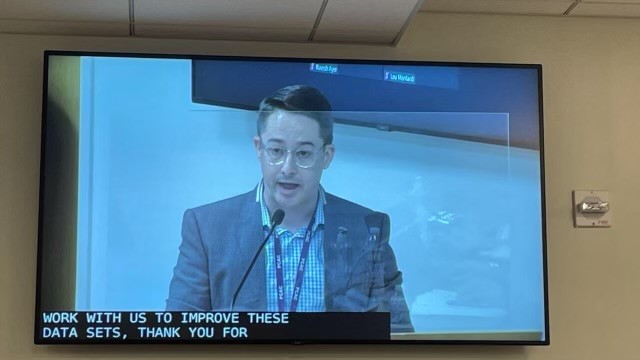Good morning, I am Bradley Brashears, Planning Manager at the Permanent Citizens Advisory Committee to the MTA (PCAC). Data enthusiasts like myself are ecstatic about the MTA Open Data Portal. Thank you, MTA for uploading many of the data sets ahead of schedule with many more in the pipeline. You have made the commitment to continue uploading data within the three-year required timeframe, developing new datasets, and revising current sets to provide more information and useful metrics for all stakeholders to use. This is extremely important for increasing transparency and trust so that everyone can collaborate on workable solutions to help improve our vast transit network. Thanks to Senator Comrie for sponsoring the legislation, and Governor Hochul for signing it into law. Hats off to Sarah Meyer and the Open Data team for providing us with this information.
Key Performance Indicators such as train run times, daily ridership numbers, MDBF, major incidents, elevator and escalator availability, and so much more are crucial to understanding areas that are in need of improvements. Some of these data sets themselves could use some help. For example, turnstile data is currently provided in four-hour segments; breaking it down by hour would make it much more useful. In addition, passenger-focused metrics including both Additional Platform Time and Additional Train Time need to be more granular. Currently, they are given as averages, which dilute the actual passenger experience: riders don’t experience averages.
From previous discussions, we know you plan to improve data that is given on the current Capital Program Dashboard – these improvements are greatly needed to provide more detailed and useful information. Some of the data points we would like to see more information about on the Portal and on the Dashboard itself include:
- Budget allocations and budget change information;
- Current status of projects and reasons for delays;
- Improved metrics for project milestone tracking, including dates;
- Details for projects that have no information at all;
- Goals and purpose of projects;
- Funding sources and costs;
- Twenty-Year Needs Assessment data.
We look forward to more information as it is made available and hope you’ll continue to work with us to improve these data sets. Thank you for listening and incorporating our thoughts and ideas. Together, we can make it happen!
